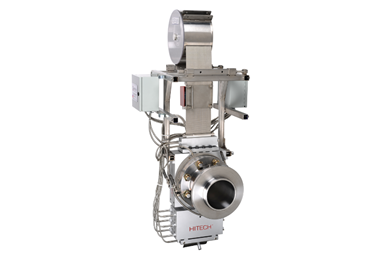Next Generation PLC Controls Boost Performance of Polymer Melt Filters
Operational parameters are configured via an automation algorithm that detects real-time processing conditions. The rate of filter screen advancement is continuously monitored and automatically adjusted according to pressure conditions to maintain constant processing pressure and melt temperature.
High-Technology Corp. latest generation of PLC touchscreen controls has descriptive graphics and enables maximum flexibility to adapt to varying processing conditions. Both operational parameters and hardware are continuously monitored with 19 discrete alarms that can be integrated into the operation of the line.
Operational parameters are configured via an automation algorithm that detects real-time processing conditions and adjusts the operation of the screen changer accordingly. Configuration of operational parameters is completed via multi-layer password protection. Constant processing pressure is automatically maintained with the highest level of automation by adjusting screen displacement according to pressure conditions.

High-Technology’s latest Model DRXL screen changer introduces several new features including a proprietary flow-channel and breaker plate geometry to form a balanced polymer seal for consistent screen displacement. Outstanding results have been achieved in a wide range of challenging applications including flexible PVC precision tubing as well as co-ex cast film lines running highly filled polymers requiring ultra-fine filtration.
Related Content
-
Understanding Melting in Single-Screw Extruders
You can better visualize the melting process by “flipping” the observation point so the barrel appears to be turning clockwise around a stationary screw.
-
Reduce Downtime and Scrap in the Blown Film Industry
The blown film sector now benefits from a tailored solution developed by Chem-Trend to preserve integrity of the bubble.
-
Medical Tubing: Use Simulation to Troubleshoot, Optimize Processing & Dies
Extrusion simulations can be useful in anticipating issues and running “what-if” scenarios to size extruders and design dies for extrusion projects. It should be used at early stages of any project to avoid trial and error and remaking tooling.




